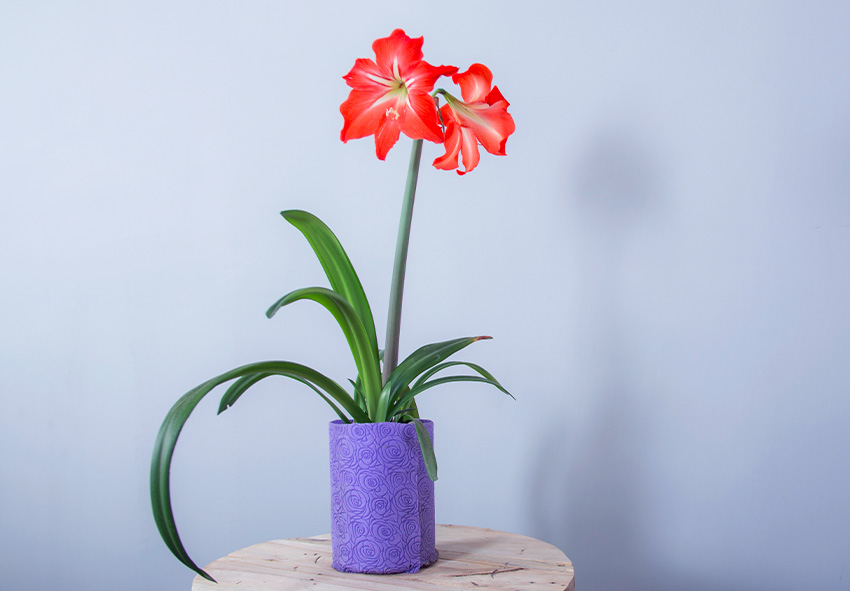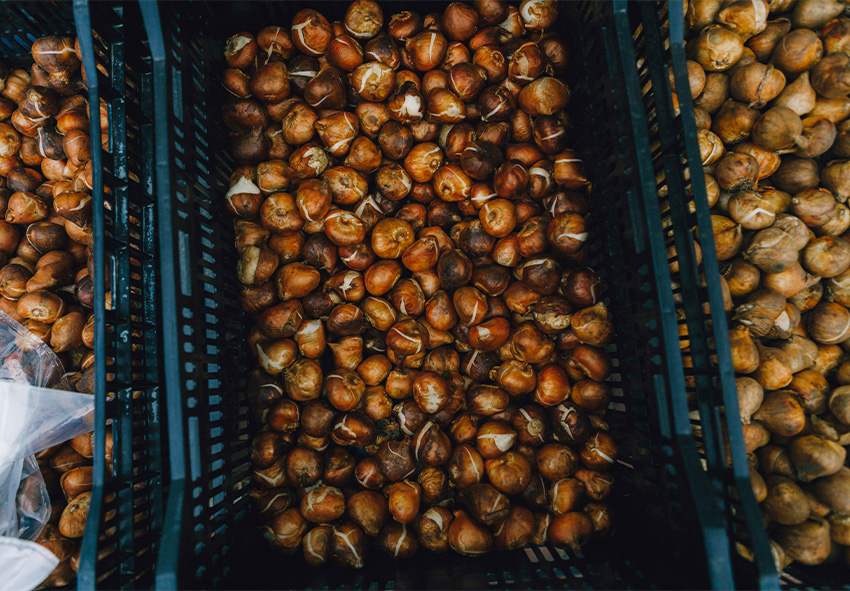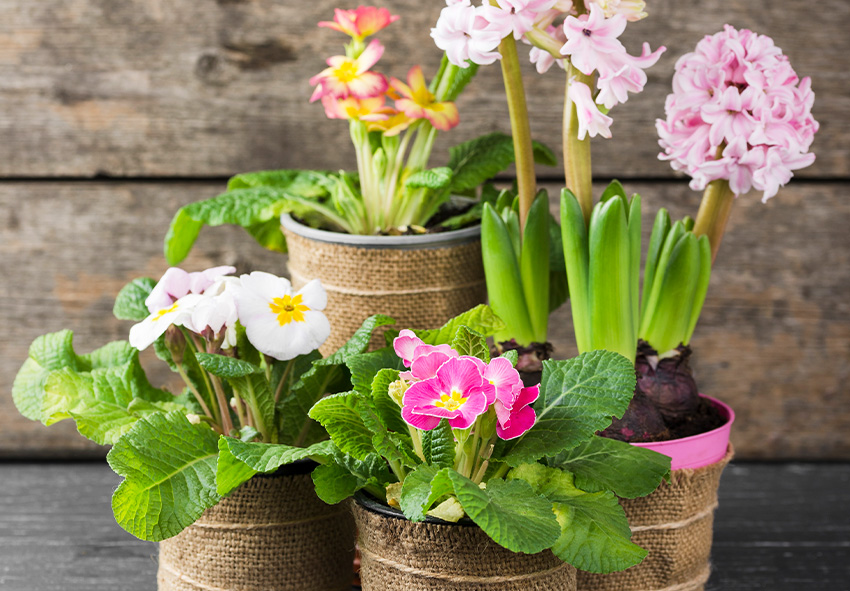Gardening through the winter months is not only possible but also rewarding. Many plants thrive in pots during colder weather, allowing gardeners to maintain greenery and prepare for vibrant spring displays. Additionally, certain tubers and bulbs can be overwintered indoors to protect them from frost and ensure a stunning bloom come warmer months. This article will explore both approaches: growing potted blooms and overwintering bulbs or tubers. Our gardening blog is a perfect place to find all the information you need!
Why Is Winterisation Necessary for Bulbs?
Winterisation protects sensitive plants and their storage organs from harsh weather conditions. Frost and freezing temperatures can damage or kill bulbs, tubers, and rhizomes, making it essential to either provide insulation outdoors or bring them indoors.
Certain bulbs need a period of dormancy during the winter months to replenish their energy reserves. Proper winterisation ensures they remain healthy and ready to sprout when replanted in spring.
How to Determine the Method of Winterisation?

The method of winterisation depends on the plant’s hardiness and growth habits. Here are the key factors to consider:
- Climate Zone: Plants native to milder climates often require indoor storage in colder regions.
- Frost Tolerance: Some bulbs and tubers, like tulips, can endure frost with proper mulch, while others, like dahlias, must be stored indoors.
- Dormancy: Determine if the plant remains active or goes dormant during winter, as this influences its care needs.
- Moisture Needs: Overwintering plants in pots requires careful control of soil moisture to prevent rot.
By assessing these factors, gardeners can choose the most effective winterisation strategy for their plants.
Plants That Can Be Grown in Pots and Replanted Outdoors in Spring
Some plants thrive in pots during the winter months and transition seamlessly to outdoor gardens in spring. This method allows gardeners to enjoy greenery and even blooms during the colder season while preparing for a vibrant spring garden. The following plants are ideal candidates for pot growth and later transplantation.
Lilies
Lilies can be started indoors in pots over the winter and then transplanted outdoors in spring for a stunning garden display. These elegant flowers add height and structure to any garden. Winter growth indoors allows gardeners to ensure the bulbs are protected from frost while promoting healthy development. Lilies come in a variety of colors and sizes, making them versatile for garden designs. By starting them indoors, you gain an early advantage in their growth cycle.
Keep bulbs in well-draining soil in a cool, sunny location. Water sparingly until growth starts to prevent rot. As shoots begin to emerge, ensure they receive adequate light to prevent spindly growth. Use a balanced fertilizer sparingly during the growing phase indoors. Transplant outdoors only after the last frost, ensuring the soil is rich and well-drained.
Irises
Many iris varieties, particularly bearded irises, can handle cold weather in pots and transplant easily into outdoor gardens. Their striking sword-like foliage provides year-round interest, even in pots. Starting irises indoors protects their rhizomes from excessive moisture and freezing. They’re a favorite for their early spring blooms, which bring a splash of color to gardens.
Ensure good drainage by using a gritty potting mix and place pots in full sun or a bright indoor location. Water lightly during the winter to avoid soggy soil conditions. Rotate pots periodically to ensure even light distribution. When transplanting outdoors, choose a sunny location with well-drained soil and plant rhizomes shallowly.
Peonies
Peonies can be started in pots, but they require patience as they establish roots over winter before thriving outdoors in spring. These long-lived perennials are a gardener’s favorite for their lush blooms and fragrant flowers. Wintering them in pots protects their delicate roots from extreme conditions. Peonies develop stronger and healthier root systems when given time to settle in pots.
Use a large pot with sufficient depth to accommodate their roots. Provide rich, well-draining soil and water moderately to maintain slight moisture. Avoid overwatering, as peonies dislike waterlogged conditions. Place pots in a sheltered, cool location with indirect sunlight. Transplant carefully to prevent root disturbance, ensuring the crown is just below the soil surface.
Amaryllis
Amaryllis is a popular indoor winter bloomer that can be moved outdoors in spring to continue growing in the garden. These showy flowers provide vibrant color during the colder months, making them a popular choice for indoor decoration. Starting them indoors ensures a head start on their growth. Amaryllis can bloom repeatedly if properly cared for, adding long-term value.
After blooming, allow the foliage to grow and continue photosynthesis, which strengthens the bulb for future growth. Gradually reduce watering as the leaves yellow and go dormant. Keep the bulb in a dry, cool place during dormancy. Transplant in spring into rich, well-drained soil in a sunny spot, ensuring the neck of the bulb is above soil level.
Plants That Are Better for Overwintering as Tubers or Bulbs Indoors

Certain plants are better suited to indoor storage during the winter months. Their tubers or bulbs are sensitive to frost and require protection to ensure survival and future growth. Overwintering perennial plants indoors helps maintain their viability and prepares them for planting when spring arrives.
Dahlias
Dahlia tubers are sensitive to frost and are typically stored indoors over winter. Plant them outdoors in spring for summer blooms. These vibrant flowers are a summer garden staple, offering a wide range of colors and forms. Overwintering ensures their tubers remain viable for the next growing season. By keeping them indoors, you can inspect tubers for any signs of rot or disease.
Store tubers in a cool, dry place such as a basement or garage. Pack them in slightly damp peat moss or sand to prevent dehydration. Check periodically for signs of rot or shriveling. Pot up tubers in early spring indoors to encourage early sprouting, and transplant them outdoors once all danger of frost has passed.
Gladioli
Gladiolus corms are typically dormant in winter and should be stored indoors. Start them in pots indoors in early spring for outdoor planting later. These tall, stately flowers add drama and height to garden beds. Protecting corms indoors prevents them from freezing and extends their lifespan. Growing them in pots ensures a controlled environment for early growth.
Keep corms dry during winter storage to avoid rot. Use breathable materials like paper bags or mesh for storage. When planting in pots, use well-draining soil and provide bright light. Begin watering sparingly until shoots emerge. Transplant to a sunny outdoor location once the threat of frost has passed, spacing them adequately for air circulation.
Freesias
Freesia bulbs can be started in pots indoors during late winter and replanted outdoors in spring for fragrant blooms. Known for their captivating scent, freesias are a delightful addition to any garden. Indoor potting allows for a controlled environment that encourages successful growth. These flowers make excellent cut flowers and can brighten up indoor spaces in early spring.
Use well-drained soil in pots and place them in a sunny location for optimal growth. Water sparingly, ensuring the soil doesn’t become waterlogged. Fertilize lightly with a balanced fertilizer to support flowering. Gradually acclimate the plants to outdoor conditions before planting them in the garden in spring.
Begonias
Tuberous begonias can be grown in pots indoors over winter, but their tubers are typically dormant. Start them in late winter for spring planting. These versatile plants offer continuous blooms in shaded areas, making them a favorite for gardeners. Storing begonias indoors protects their tubers from frost damage and ensures a head start for the next season.
Store tubers in a cool, dark place during dormancy, such as a basement or storage room. Check periodically to ensure they aren’t drying out or rotting. In late winter, rehydrate tubers by soaking them briefly in water before planting in pots. Use rich, well-draining soil and keep them in indirect light until growth begins. Gradually increase light exposure and water as shoots emerge.
Preparing Your Garden for Spring Planting

As winter draws to a close, it’s time to prepare your garden for the transition from indoor pots to vibrant outdoor blooms. Ensuring a smooth move for your plants and bulbs involves a few key steps to set them up for success. Here’s how to get your garden ready:
Gradually Acclimate Plants
- Move potted plants outdoors for a few hours each day in a sheltered spot.
- Increase exposure to sunlight and fresh air over a week or two to harden them off.
Prepare Garden Soil
- Test soil pH and nutrient levels, adjusting as needed to suit your plants.
- Add compost or organic matter to improve soil fertility and drainage.
Time Your Transplantation
- Wait until the last frost has passed before planting outdoors.
- Choose an overcast day or plant in the late afternoon to minimize transplant shock.
Plan for Bloom Success
- Group plants with similar light, water, and soil needs together.
- Stagger planting times to ensure a continuous display of flowers through spring and summer.
These steps will help your garden thrive as your overwintered blooms take their rightful place outdoors. Let your hard work during winter pay off with a stunning spring display!
Conclusion
With proper care and planning, you can enjoy vibrant flowers during winter and prepare for an even more colorful spring. Growing potted blooms like lilies and hydrangeas ensures greenery during colder months, while overwintering bulbs like dahlias and gladioli protects them from frost and extends their life. By understanding the needs of each plant, gardeners can make the most of winter gardening and enjoy a flourishing garden year-round.
Frequently Asked Questions (FAQs) about Plants Winterisation
1. Can I leave potted plants outside during the winter?
Some hardy plants can stay outside in pots if they are frost-resistant and well-insulated. Use large pots with good drainage and cover the soil with mulch for added protection. For sensitive plants, it’s better to bring them indoors or store their bulbs and tubers to prevent frost damage.
2. Can I order these perennial plant bulbs in your online store?
Yes, our online store Dutch-bulbs.com offers a wide selection of bulbs and tubers, perfect for winter planting or overwintering indoors. Browse our catalog to find popular varieties like lilies, dahlias, and freesias. Each order comes with detailed care instructions to help you grow healthy, vibrant blooms. Check our seasonal specials for great deals!
3. When should I start replanting bulbs outdoors in spring?
Replant bulbs and tubers after the last frost date in your area. This ensures the ground is warm enough for growth and protects the plants from cold damage. Begin hardening off potted plants by gradually exposing them to outdoor conditions a week or two before planting them in the garden.
4. Can I grow flowering plants in pots all year round?
Yes, many flowering plants thrive in pots year-round, especially if you adjust their care based on the seasons. For winter, bring cold-sensitive plants indoors or place pots in sheltered locations. During spring and summer, move them outdoors for full sunlight and better air circulation.
5. What are the most common mistakes in overwintering bulbs?
Common mistakes include storing bulbs in damp conditions, which can lead to rot, and failing to remove damaged or diseased parts before storage. Overwatering dormant bulbs is another issue. Always store bulbs in a cool, dry place and avoid extreme humidity to ensure their viability for the next growing season.
Published: 24.12.2024
